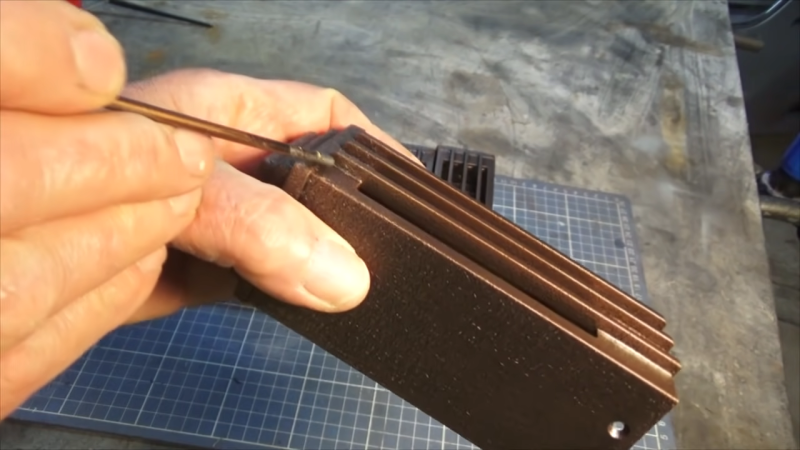To say that that the commercially available garden path lights commonly available at dollar stores are cheap is a vast overstatement of their true worthlessness. These solar-powered lights are so cheaply built that there’s almost no point in buying them, a fact that led [Mark Presling] down a fabrication rabbit hole that ends with some great tips on powder coating parts with difficult geometries.
Powder coating might seem a bit overkill for something as mundane as garden lights, but [Mark] has a point — if you buy something and it fails after a few weeks in the sun, you might as well build it right yourself. And a proper finish is a big part of not only getting the right look, but to making these totally un-Tardis-like light fixtures last in the weather. The video series below covers the entire design and build process, which ended up having an aluminum grille with some deep grooves. Such features prove hard to reach with powder coating, where the tiny particles of the coating are attracted to the workpiece thanks to a high potential difference between them. After coating, the part is heated to melt the particles and form a tough, beautiful finish.
But for grooves and other high-aspect-ratio features, the particles tend to avoid collecting in the nooks and crannies, leading to an uneven finish. [Mark]’s solution was to turn to “hot flocking”, where the part is heated before applying uncharged coating to the deep features. This gets the corners and grooves well coated before the rest of the coating is applied in the standard way, leading to a much better finish.
We love [Presser]’s attention to detail on this build, as well as the excellent fabrication tips and tricks sprinkled throughout the series. You might want to check out some of his other builds, like this professional-looking spot welder.
















Powder coating is one. Dipping is another.
what’s wrong with spray painting? much easier, and I’ve done things that have been outside for more than 20 years!
Paint Covers Material and Stops Rust!
A novel hack using atomized Rust-Oleum aromatic hydrocarbons results in an oxide free environment!
true. it’s not often we get a hack on HaD.. Looking back past the last few articles, would it be on in ten or so? This one https://hackaday.com/2021/07/24/esp8266-adds-wifi-logging-to-ikeas-air-quality-sensor/ from yesterday was a hack. Not one I would have done – easier to just add a sensor to a esp32 – but it was still a hack.
Nothing wrong perse, it’s just a different technique. It’s cool to at least be aware of more than one technique to help your project along. For more of a first dip (pun intended) into powder coating, I’ll quote the first hit on a search engine:
Powder coating has a number of benefits, one of which has already been mentioned earlier. Powder coating a metal object allows for a dense sturdy finish, more durable than conventional paints. Secondly, this process only requires a single coat so it is fast, efficient, and easy. In addition to its ease of application, it allows for custom textured and colored finishes as the powders involved can be nicely manipulated. Furthermore, powder coating objects result in a remarkably even finish as the powder melts and sets across the entire object at once, leaving no application traces or drips. Finally, the powder coating process is environmentally friendly as it produces minimal volatile organic compounds.
With a number of benefits, there are also some disadvantages of powder coating. The first is its inability to produce a thin finish. Although a thick sturdy finish on metal objects works well in most cases but some objects require a thinner finish which is where powder coating fails. Attempting to thin the polymer results in a course, bumpy finish much like an orange peel. Another drawback is the complexity and expensive nature of the procedure, making it unsuitable for small-scale sheet metal applications. The process requires electrostatic equipment, spray materials, and an oven which could all be too much work and expense for a minor application.
As anyone who’s owned an old 4×4 with bull bars or side steps will tell you, another drawback to powder coating is that a single pinprick hole in it allows water underneath and rust then spreads like cancer below the surface, usually by the time it bubbles through visibly the whole part is fairly well dead and crunchy.
Paint can be touched up years down the line.
How about mirrors distributing light from a center point?